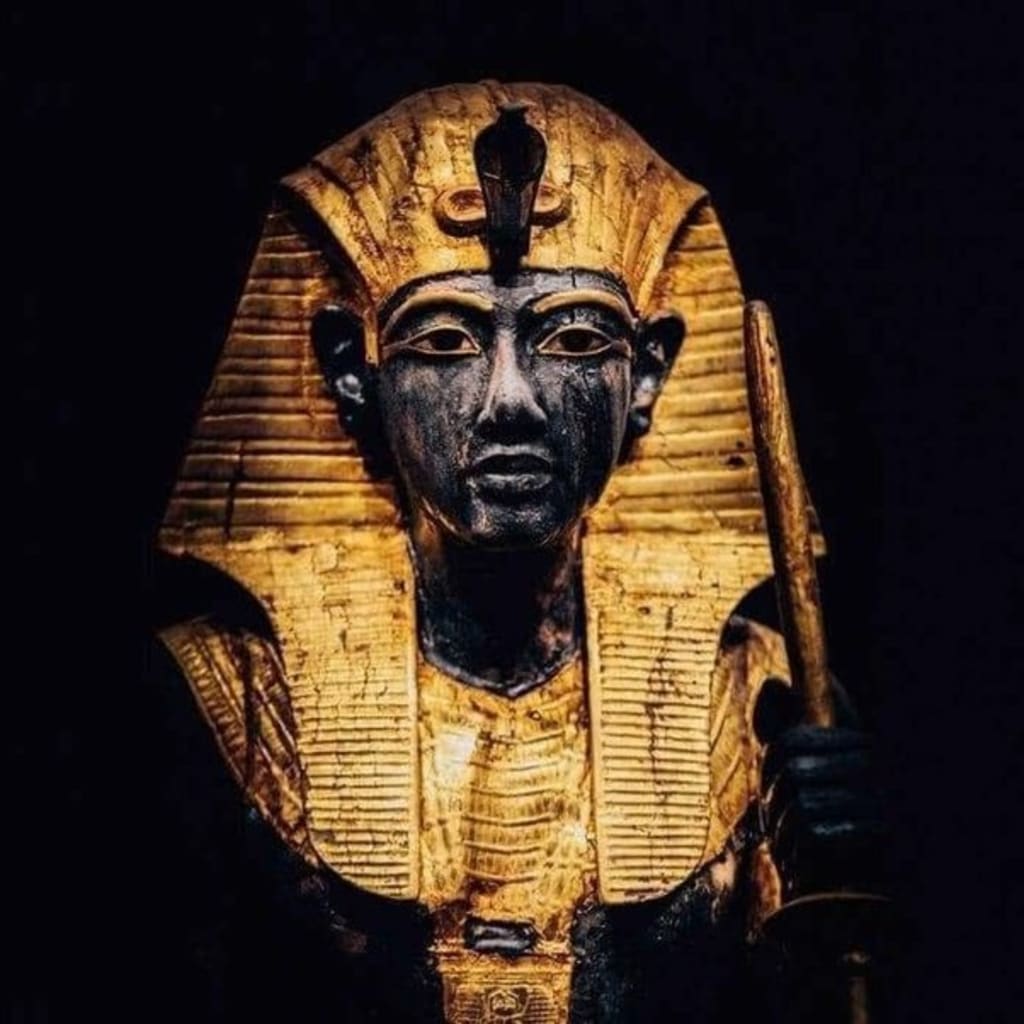Tutankhamun
Tutankhamen was an ancient Egyptian pharaoh

King Tutankhamun, also known as King Tut, was a pharaoh who ruled Egypt from 1332 to 1323 B.C. He ascended to the throne of Egypt as a child, when he was eight or nine years old, and was guided by several key figures including Ay, the Grand Vizier and potentially Tut’s maternal grandfather, and Horemheb, the commander-in-chief of the military.
Despite the boy king’s importance in our history today, his reign was short and relatively unimportant in the history of ancient Egypt. He became an important figure only in death with the discovery of his tomb and mummy in 1922 both of which were incredibly preserved, and provided valuable insights into the history of ancient Egypt.
Tut’s most important achievement in life was restoring the cult of Amun-Ra and returning Egypt to polytheism, which overturned the religious reforms of his father, Akhenaten.
Akhenaten, King Tut’s father reigned over Egypt for about 17 years until King Tut took over after his death. King Akhenaten was a controversial figure in his time for moving the capital to Amarna and revolutionizing the ancient Egyptian religion by eliminating all the gods of the Egyptian pantheon and elevating Aten, previously a minor god, to the role of the only and supreme god.
The decision to change the state religion was extremely controversial and not well received by the public, and was quickly reversed after King Tut ascended to the throne.
The identity of King Tut’s mother is still up for debate, but there are three primary suspects: Kiya, Queen Nefertiti, and a figure known as the “younger lady.” Kiya and Nefertiti were both known wives of Akhenaten during his lifetime, so it is plausible that either of them could have been King Tut’s mother.
Additionally, an unidentified mummy of a woman was discovered inside tomb KV35 alongside the mummy of Queen Tiye, King Tut’s grandmother. DNA evidence suggests that this unidentified mummy may have been the mother of King Tut, although this topic is still hotly debated amongst Egyptologists.
King Tut’s paternal grandparents were King Amenhotep III and Queen Tiye. Amenhotep III reigned during the first half of the 14th century, and he may have been one of the most successful pharaohs in ancient Egyptian history, reigning during a period of peace and prosperity at the height of Egyptian civilization
King Tut died at age 18 or 19 around 1324 B.C, but there are many theories surrounding how he died. There is a small bone fragment on the inside of his skull that intially led some historians to believe that King Tut was murdered by a blow to the back of his head. But, this damage could have also been caused during the mummification process or while his mummy was being excavated, and most experts agree that he was not murdered.
One of the most compelling points of evidence surrounding King Tut’s death is the presence of a fracture at his kneecap, which doesn’t have any signs of healing, indicating it happened shortly before his death. Chariots were discovered in King Tut’s tomb, and this type of injury could have been sustained from a high velocity fall from a chariot, although this theory has not been confirmed.
Another theory around King Tut’s death involves the presence of a form of malaria discovered in his mummy. The malaria could have been the cause, or contributed to his death. It is likely that his death was a combination of these factors.
We know of two key figures that advised King Tut during his lifetime: Ay, the Grand Vizier and likely the father of Queen Nefertiti, and Horemheb, the commander-in-chief of the Egyptian army. After King Tut’s death, Horemheb was away waging war against the Hittites, so Ay ascended to the throne. Ay ruled as pharaoh for three years until his death, and upon his death, Horemheb became pharaoh and would rule for nearly 30 years.
About the Creator
Enjoyed the story? Support the Creator.
Subscribe for free to receive all their stories in your feed. You could also pledge your support or give them a one-off tip, letting them know you appreciate their work.






Comments
There are no comments for this story
Be the first to respond and start the conversation.